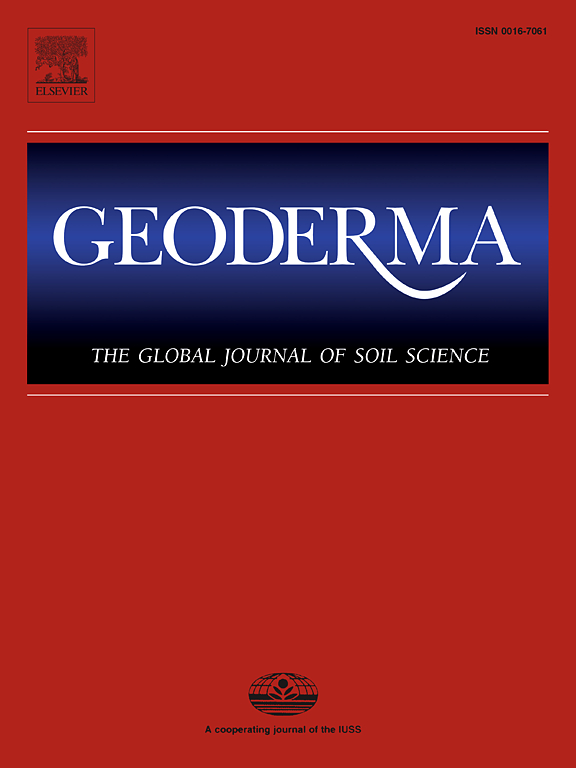Regionalized ammonia emission abatement by urease inhibitor treatment of urea for agro-environmental conditions of Western Central Europe
IF 5.6
1区 农林科学
Q1 SOIL SCIENCE
引用次数: 0
Abstract
Urea is the most widely used synthetic fertilizer worldwide, covering 16% of fertilizer consumption in Germany in 2022. It has a notable propensity to release nitrogen (N) in the form of ammonia (NH3) when applied to soil, contributing to environmental pollution, and indirectly increasing nitrous oxide (N2O) emissions. This loss of NH3 from urea also represents a loss of N for crop production. Consequently, urease inhibitors (UIs) are increasingly applied in agricultural practice to mitigate N losses, and to ensure compliance with regulations recently introduced in some European countries. This development should be reflected in reported emissions at national level. Representative emission and abatement factors are, therefore, required for a precise calculation of NH3 losses from urea application. While some meta-studies suggest abatement factors on a global scale, their applicability across countries is questionable, due to variable environmental and crop conditions, especially within Europe.
We conducted an analysis of the current international literature to derive a new emission factor for NH3 losses after application of urea with UIs for Western Central Europe, that is suitable for integration into the German emission inventory and inventories of other countries with similar cropping conditions. Based on a linear mixed-effects model, we found an abatement factor of 60 %. In contrast to theoretical expectations, environmental factors, such as temperature, soil pH, soil CEC and land use had no significant influence on this abatement effect. Our findings emphasize the need for further comprehensive data sets to refine emission calculations at the national level, reflecting effects of regional weather and cropping conditions on the NH3 abatement by use of UIs.
利用脲酶抑制剂处理尿素,在中西欧农业环境条件下减少区域氨排放
本文章由计算机程序翻译,如有差异,请以英文原文为准。
求助全文
约1分钟内获得全文
求助全文
来源期刊

Geoderma
农林科学-土壤科学
CiteScore
11.80
自引率
6.60%
发文量
597
审稿时长
58 days
期刊介绍:
Geoderma - the global journal of soil science - welcomes authors, readers and soil research from all parts of the world, encourages worldwide soil studies, and embraces all aspects of soil science and its associated pedagogy. The journal particularly welcomes interdisciplinary work focusing on dynamic soil processes and functions across space and time.
 求助内容:
求助内容: 应助结果提醒方式:
应助结果提醒方式:


